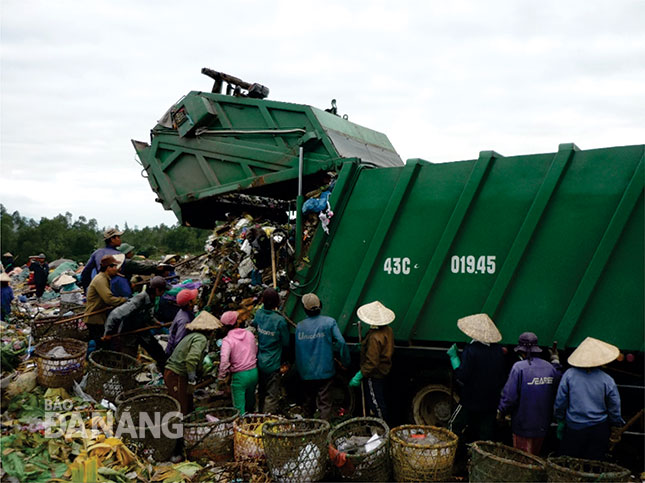Appealing for investment to build solid waste treatment complex
Da Nang is focusing on attracting domestic and foreign investors to develop a solid waste treatment complex amid challenges facing the locality in dealing with the large volume of untreated solid waste.
 |
| Between 850 and 900 tonnes of solid waste are collected every day from across the city and buried at Khanh Son Waste Dump’s landfill areas in Lien Chieu District’s Hoa Khanh Nam Ward. |
A total of 50 domestic and foreign investors attended a seminar on Tuesday, entitled ‘Promoting Investment in the Solid Waste Treatment Complex in Da Nang’, which was jointly held by the municipal People’s Committee (PC) and the Asian Development Bank (ADB).
Mr Le Quang Nam, the Director of the municipal Department of Natural Resources and the Environment said, every day, between 850 and 900 tonnes of solid waste are collected from across the city and buried at Khanh Son Waste Dump’s landfill areas in Lien Chieu District’s Hoa Khanh Nam Ward.
Covering an area of 32.4ha, the existing landfill areas are expected to be full by 2020, and its working life is likely to end no later than 2021.
According to a survey conducted by ADB, biodegradable organic materials account for between 40% and 60% of the total solid waste, whilst plastic items and paper make up 10%- 30%, and 5% - 20%, respectively.
By 2050, Da Nang will have collected and treated 95% of the daily solid waste volume, of which 72% will be recycled.
According to Mr Amer Chowdhury, a representative from ADB, in an attempt to reduce environmental pollution, Da Nang is stepping up the solid waste treatment complex project with a daily capacity of at least 1,000 tonnes, and even more in the future.
Furthermore, this project aims to find suitable technological solutions to treat urban solid waste, whilst minimising the negative environmental impacts caused by solid waste in the city. This, thereby, will help the locality ensure more effective waste management, and become an environmentally-friendly in the near future.
With the technical and legal support assistance from ADB, the implementation of the project is expected to last 32 months under public-private partnership (PPP) format.
The city is seeking suitable sites for the construction of the project, either on the southeastern side of the Khanh Son Waste Dump or in Hoa Vang District’s Hoa Nhon Commune.
ADB is involved in conducting pre-feasibility study for the project and opening project bids.
The completed pre-feasibility study will be submitted to the municipal government for consideration by late this year.
 |
| Potential investors joining in field trips to the Khanh Son Waste Dump |
Also at the seminar, representatives from domestic and foreign businesses presented their ideas about the most optimal technological solutions suitable for Da Nang.
Ms Dang Thi Kim Chi, the Science and Technology Council under the Viet Nam Association for Conservation of Nature and Environment (VACNE) delivered her opinions of the existing waste treatment techniques, the recycling and reusing of solid waste, the conversion of organic waste into micro-organic fertilizer, and the use of anaerobic technologies.
Mr Mai Huy Tan, the Chairman of the Board of Directors of the Ha Noi-based VIDEB Co., Ltd suggesting generating electricity from incinerated waste because this method boasts many advantages and high efficiency.
In his closing speech at the event, Vice Chairman of the municipal PC Nguyen Ngoc Tuan vowed that the most favourable conditions would be created for investors, in order to ensure the transparency and objectivity in the process of attracting investment and deploying the project.
The city leader also affirmed the city’s firm stance on giving priority to investors using advanced and environmentally friendly treatment technologies.